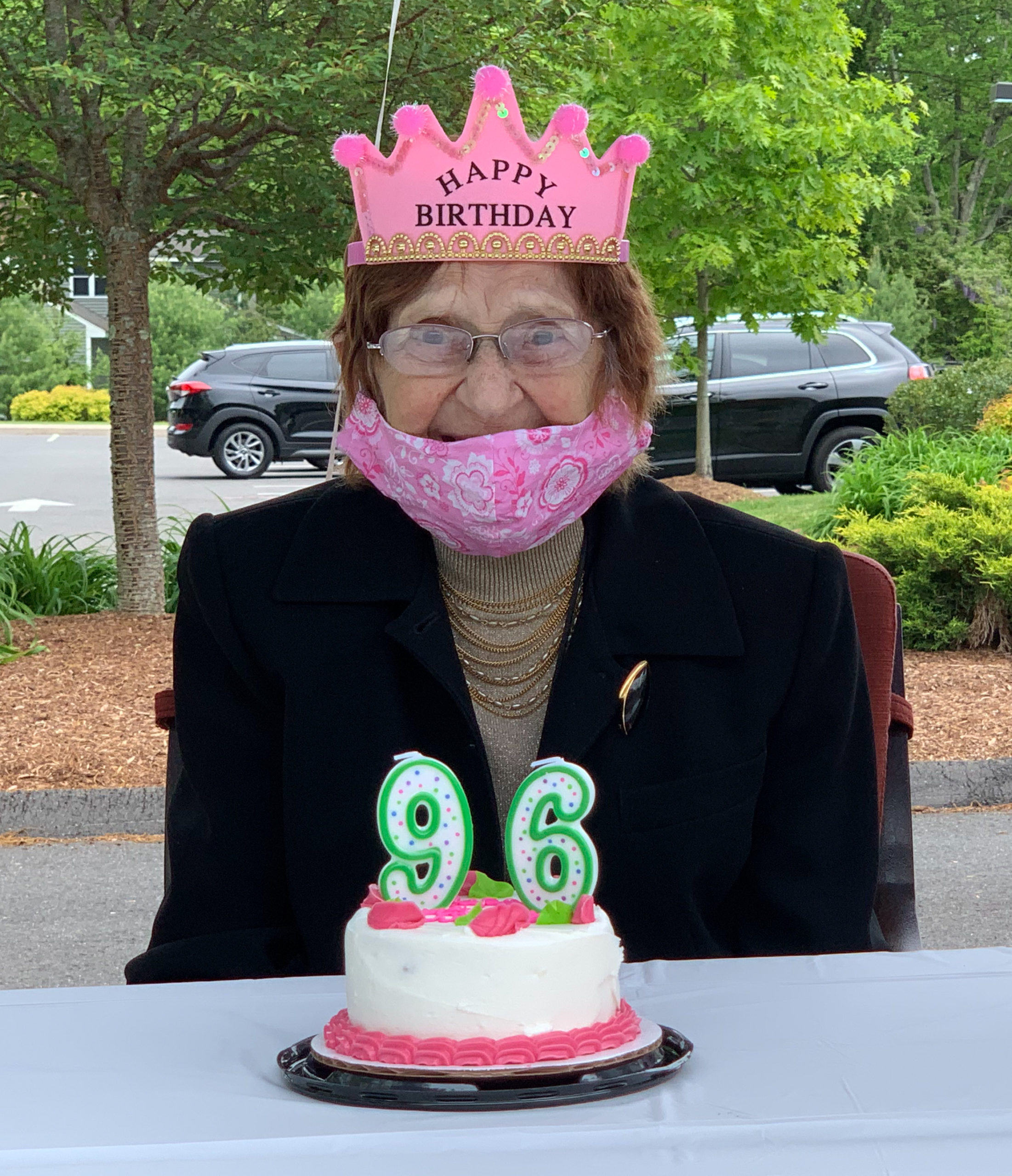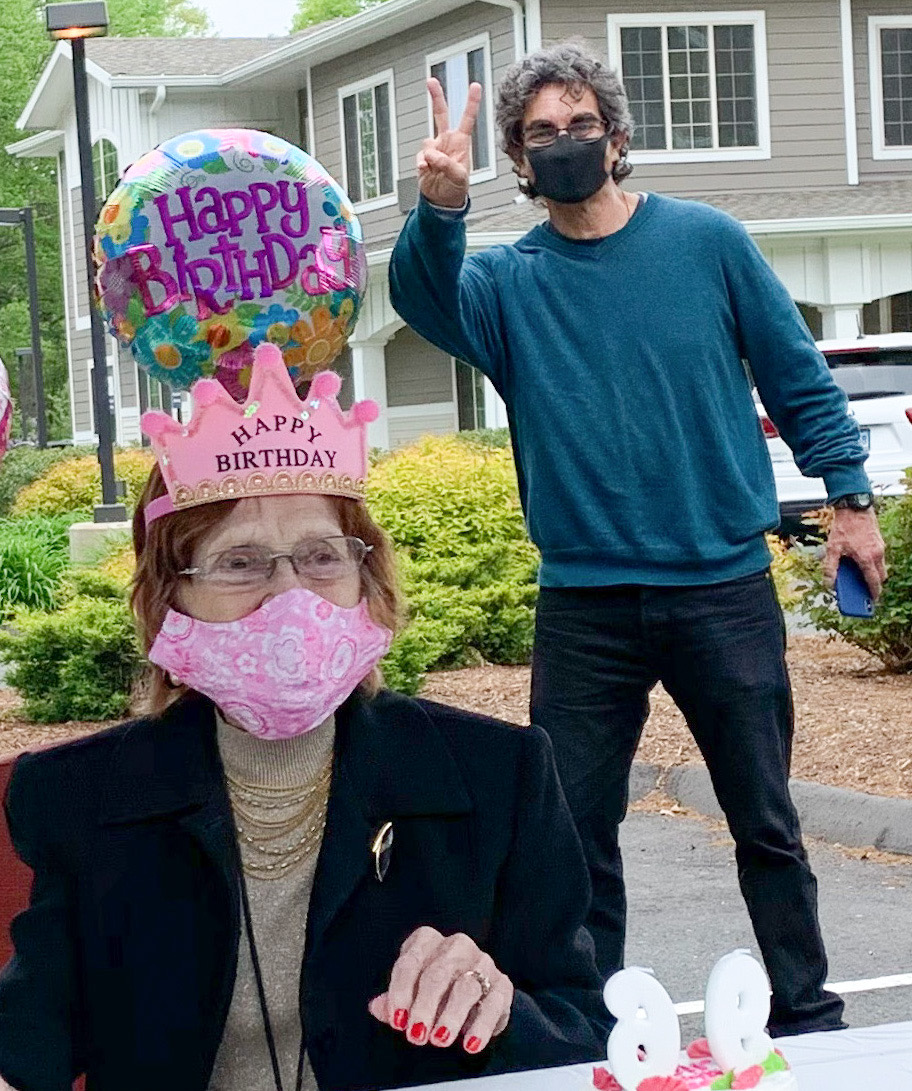I never visit my mom on her birthday, and my mom is just fine with that.
Mom’s birthday is at the end of May. And since Mother’s Day is the second Sunday in May, there’s usually a gap of about two or three weeks between these two important milestones.
This quirk of the calendar means that each winter, just before I book my flight from my home in Pasadena, California, to Mom’s in Connecticut, Mom and I have a short and predictable conversation.
Mom, I can’t make two cross country flights in May, I tell her. Shall I visit you on Mother’s Day, or would you rather that I wait and fly out on your birthday?
Oh, dughas (my son), Mother’s Day is more important, she always says. Visit on Mother’s Day.
This year was no different. Before Mom and I knew that there would soon be a worldwide pandemic, we participated in this same conversation. And then I booked my flight for a Mother’s Day visit.
I boarded my flight in early May while California and the rest of the country was in a lockdown. The authorities had advised against anything except essential travel, and I had considered cancelling. But what can be more essential than visiting one’s elderly mom? I had thought about delaying the visit, but it seemed I would just be facing the same quandary in a month or two…or three. And at age 96, Mom wasn’t getting any younger.
I was one of perhaps 30 people in the terminal at LAX airport in Los Angeles. We all wore a mask. And then we all appeared to get on the same plane. Never mind wanting an empty middle seat, I had an entire section of the airplane to myself. I settled in and didn’t move for the rest of the flight. No one did, not even the flight attendants. I think we were all too scared.
I arrived in Connecticut the next morning, on Mother’s Day.
Normally, I would visit Mom right away. But these aren’t normal times. Instead, I put myself into self-quarantine for two weeks. The State of Connecticut advised in May that all travelers arriving in the state should self-quarantine for 14 days. I learned about this advisory from my own internet research, and not because anyone at American Airlines or at the Hartford airport advised me. No one took my name or contact information. No one at the airport took my temperature, or asked me if I felt sick, or asked if I had recently been in China, or Washington State, or any other coronavirus hotspot.
Once in Connecticut, I could have violated self-quarantine, and no one would have known.
But I followed the advisory. I stayed home. I measured my temperature each morning.
For the first three days I felt fine. I had no symptoms of COVID-19. I worked remotely, and I enjoyed catching up on a lot of reading and other work. I was happy.
By the end of my first week in quarantine, things started to change.
I still had no symptoms, but I also began to feel less fine. The incubation period for COVID-19 can take up to two weeks, and so with each passing day that first week, I became increasingly convinced that even though I wasn’t sick, I certainly must be well on my way.
On my ninth day in quarantine, I checked to make sure I had enough Tylenol and cough syrup to treat the symptoms that I was sure would be arriving in a day or two. I confirmed that my health insurance was still in force. Statistically, I told myself, most people get sick on their tenth day after exposure. This is not a fact. It’s just something that I told myself after nine days in quarantine, to rationalize why I was now really, really worried about getting sick.
And so it went for the rest of my time in quarantine. I had no symptoms of COVID-19. But I also was certain that the symptoms would appear the following day.
By day 14, I still had no symptoms. Was I the outlier who gets sick after 15 days? Maybe. But I had been working from home in isolation, and I had not violated quarantine. I finally felt assured that I was virus-free.
By now it was my mom’s birthday. I had missed Mother’s Day for the first time, I think, ever. But the end of two weeks in quarantine coincided with my mom’s 96th birthday.
Normally I would just pop in at my mom’s home for a visit such as this. But we didn’t do normally this year. I was required to make an appointment to visit at Mom’s assisted living facility. I was allotted the 3 pm visitation slot.
Mom celebrated by wearing a bright pink face mask, sewn especially for the occasion. She also wore a crown that announced to the world that she was the birthday girl.
Mom was allowed visitors for one hour, under an outdoor tent. I passed a medical screening and then was allowed to visit—and was required to stay more than six feet from my mom at all times. So no birthday hugs this year.

I brought my mom a birthday cake with two candles—one of them a nine, and the other a six.
But we couldn’t actually eat any of the cake. All food brought by visitors would have to be sanitized first. And since it’s not really possible to sanitize a cake, well, we just looked at it and then put it away.

After our hour-long birthday party was over, Mom left the party tent and went back inside. I noticed that she was still wearing her birthday crown. She seemed to have a bit of an extra spark in her step as she walked back to the front door—a spark that was aided by her walker.
The next day, when I spoke to Mom on FaceTime, I noticed she was wearing her birthday crown again.
But Mom, I said, it’s not your birthday anymore. Why are you still wearing the crown?
I like the crown, Mom said. And everybody else does, too.
Ah, now I understood. Mom had enjoyed her birthday party. And now she was enjoying all the extra attention that she was getting from everyone who saw the crown and realized that she was the birthday girl.
Happy Birthday, Mom. And next year you’ll get extra hugs to make up for the ones you missed during the pandemic.




Happy Birthday and God bless Agnes! Wonderful story!
She looks radiant. So happy you could be with her.
Have two of your beautiful books.
.
So glad you were able to see Mom despite all the obstacles. And glad you and she are both well!